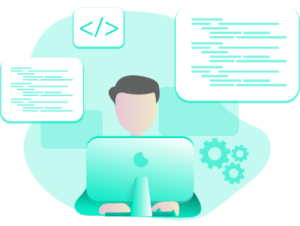Cloud computing enables companies to use IT resources flexibly and cost-effectively. Various models exist here, namely Software-as-a-Service (SaaS), Platform-as-a-Service (PaaS), and Infrastructure-as-a-Service (IaaS). In this blog post, we will highlight the differences between these models, discuss their advantages and disadvantages, and show scenarios in which they can be usefully utilized.
SaaS represents a cloud computing model in which companies use software applications over the Internet instead of installing and maintaining them themselves. The SaaS provider makes the application available and takes care of the infrastructure and maintenance. A major advantage of SaaS is the ease of implementation and use, as no local installation is required. However, customization options are limited and control over data and security rests with the provider. Examples of SaaS include Gmail, Salesforce, and Dropbox.

PaaS provides companies with a platform on which they can develop, test, and deploy applications. The PaaS provider offers the necessary infrastructure while the enterprise focuses on application development. PaaS offers the advantage of allowing enterprises to build custom applications without the overhead of infrastructure management. However, there may be limitations in the programming languages supported and security concerns. Examples of PaaS include Google App Engine and Microsoft Azure.

IaaS provides companies with basic infrastructure such as virtual machines, storage, and networks. Enterprises are responsible for managing the applications, operating systems, and middleware. IaaS provides the most flexibility and control because enterprises have full control over the infrastructure and can scale it as needed. Examples of IaaS providers include Amazon Web Services (AWS) and Rackspace.

Choosing the right cloud computing model depends on a company’s specific needs and goals.
– SaaS is suitable when businesses need out-of-the-box applications without having to worry about infrastructure or maintenance. This is ideal for tasks such as email communication, CRM, or content management.
– PaaS is suitable for companies that want to develop custom applications without having to deploy the entire infrastructure. This is particularly useful for software development projects or integrating applications with existing systems.
– IaaS offers maximum flexibility and control over the infrastructure and is suitable for companies that have specific requirements for their IT infrastructure or want to make optimum use of existing infrastructure resources.
In practice, combinations of these models are often used, depending on the individual needs of a company.
Cloud computing models such as SaaS, PaaS, and IaaS offer companies various options for using their IT infrastructure. The choice of the appropriate model depends on a company’s requirements, budget, and goals. SaaS proves to be the most popular and widely used solution due to its advantages such as easy implementation, automatic updating, and flexible scaling.
Sign up for an ongoing stream of leading SaaS buying research and resources.
Manage cloud programs easily! Click here to learn more: